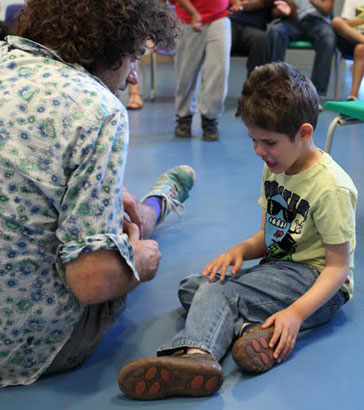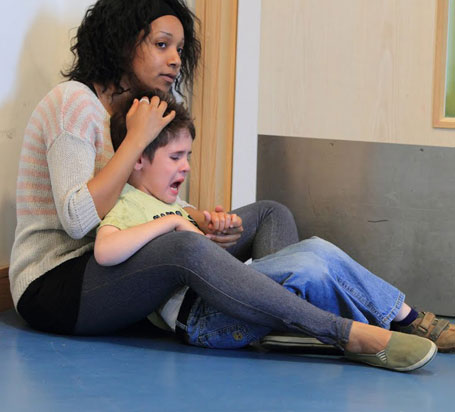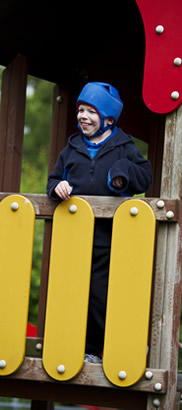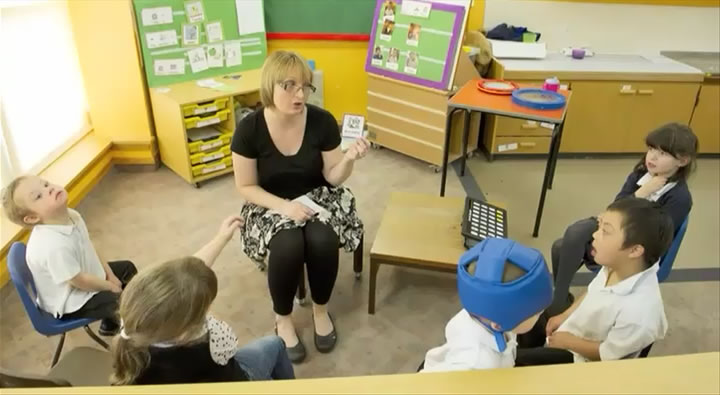would you like to see?

We can begin to generate ways of improving a situation using the 'miracle question' from solution-focused thinking:
Ask yourself:
'If we came in tomorrow and the child's behaviour was no longer a problem - what would have changed?'

Try using the 'miracle question' in relation to Nick from the example in 'Using an ABC chart'.
Miracle question:
- "If things were better for Nick tomorrow
– what would have changed?"
Possible answer:
- He would eat a variety of foods
- He would have a structured means of communication, e.g. he would be able to ask for crisps
- is mood would be calmer, more positive, and his teacher would see more smiles
- He would participate more, and
- He would be getting more out of life, showing more interest in others and his surroundings, leading to higher self-esteem and greater self-belief.

The teacher identified that the main 'miracle' for Nick would be that he would have a structured means of communication. She thought that if this was in place then he would not need to scream and cry to make himself understood.
It is important to note that although the priority concern was Nick's screaming and crying and that is what the ABC chart focused on, the solution to this was giving Nick a means of communication. In other words the solution to the problem was not the elimination of the 'unwanted' crying behaviour but the building of new skills to communicate 'need'.

Solution-focused thinking now prompts the teacher to ask a 'scaling question'.
'On a scale from 0 - 10 how close are you to achieving this desired new behaviour for the child?'
On this scale, 0 signifies that there is no sign of the desired new behaviour and 10 means that the behaviour is fully achieved. A ten-point scale acknowledges that behavioural problems are often deeply ingrained and difficult to change and that progress may be made in very small steps. Recognising that only a small difference may be made can help teachers/caregivers to remain focused and motivated.
This first scaling exercise provides a baseline from which progress can be measured.

The teacher considered how close Nick was to communicating what he wanted instead of screaming and crying?
She decided that Nick was at a 4, i.e. he was already quite some way to communicating what he wanted instead of screaming and crying.
What strategies might the teacher use to improve Nick's communication skills further?

The focus now is on developing Nick's communication.
The teacher decided that relevant strategies included:
- Becoming a safe 'container' for Nick's anxieties
- Ensuring that teachers and caregivers strengthen their attachment relationships with Nick
- Developing Nick's ability to make, and intentional choices about what he wants
- Providing sessions of intensive interaction to develop basic communication skills.
A final strategy was to consider what the consequences would be for Nick in developing his communication. If communication is to be meaningful to him there must be some positive reinforcement of his communication.
Positive reinforcement starts from thinking about what the child likes.
This might include:
- Attention
- Particular activities
- Social contact
- Food, or
- Being outside/inside
It is helpful to see that from the child's point of view their behaviour is always logical - even if it is costly. So from his perspective, Nick does not have a problem with his screaming. It is the only logical way that he knows of getting crisps and drinks. He knows it doesn't always work - but sometimes it does, and when it does, those are the times he remembers. If he had another way of getting crisps and a drink, he would use it.
What alternative forms of communication might be appropriate for Nick?

As Nick is non-verbal but his teacher's judgement is that he is already some way to being able to communicate his needs, you may have suggested that the teacher could try introducing him to a simple communication system using signs or symbols.

The teacher introduced the following for Nick:
- Using objects of reference to cue him into sessions, e.g. using a favourite piece of cloth to encourage him to join the class, and
- A simple system of symbols for Nick to use to request food or drink.
Listen to this audio clip where a teaching assistant talks about how rewarding it is to see children making progress.
